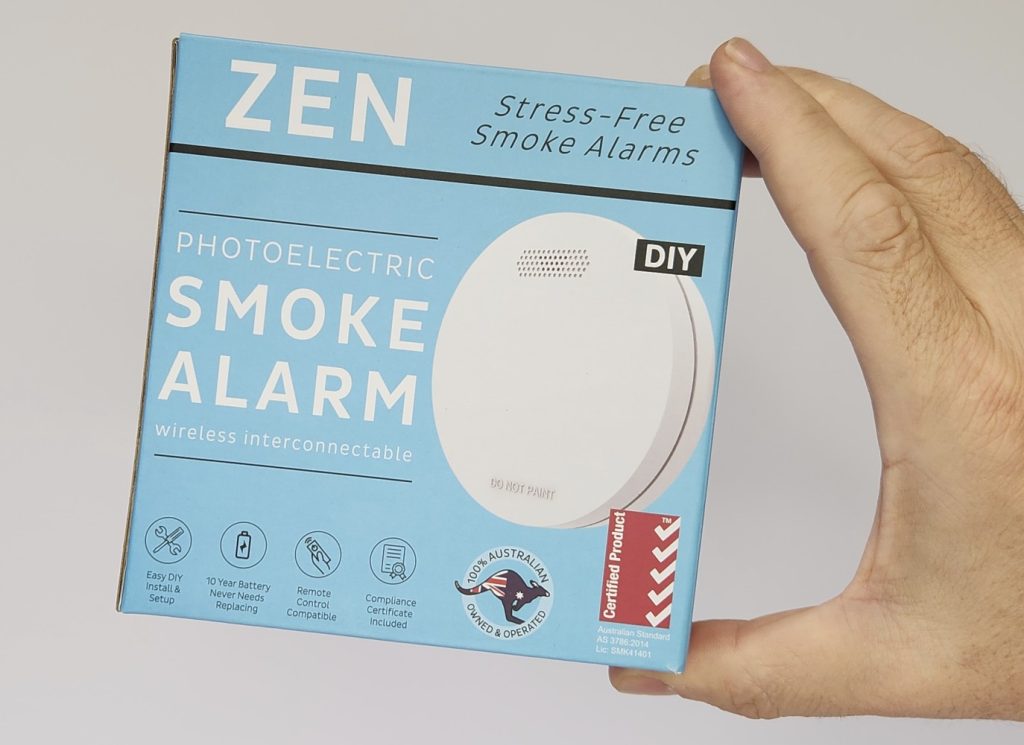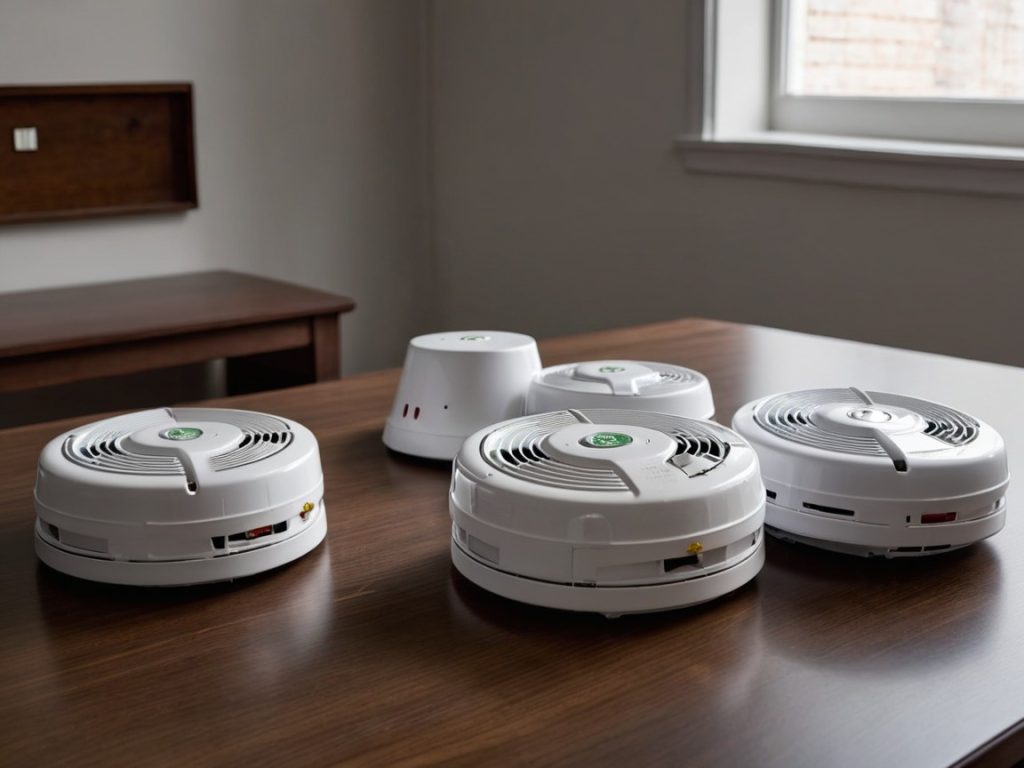Understanding Smoke Detector Types and Uses: Which One Is Right for Your Home?
When it comes to fire safety, choosing the right smoke alarm is one of the most important decisions a homeowner can make. With various smoke detector types available, understanding their differences, benefits, and legal requirements is essential for ensuring your home and family are well protected. This guide explores the different types of smoke alarms, their advantages and disadvantages, and the Australian regulations surrounding their installation.
1. Photoelectric Smoke Detectors
Photoelectric smoke alarms are designed to detect slow-burning, smouldering fires—such as those caused by overheated electrical wiring, upholstery, or bedding materials. They work by using a light beam inside the smoke alarm chamber. When smoke enters, it scatters the light, triggering the alarm.
Advantages:
✔ Highly effective at detecting smouldering fires, which are more common in residential settings.
✔ Less prone to false alarms caused by cooking fumes or steam.
✔ Recommended by fire authorities and required in many Australian states, including Queensland.
Disadvantages:
✘ Slightly slower response to fast-flaming fires compared to ionisation alarms.
✘ Can accumulate dust over time, which may trigger false alarms if not cleaned regularly.
Legal Requirements:
Under Queensland’s smoke alarm legislation, all homes must be fitted with photoelectric smoke alarms that comply with Australian Standard 3786:2014. They must be interconnected and installed in every bedroom, in hallways outside bedrooms, and on each storey of a dwelling.

2. Ionisation Smoke Detectors
Ionisation smoke alarms are designed to detect fast-flaming fires, such as those caused by flammable liquids or paper. They use a small radioactive source that ionises the air inside the chamber. When smoke particles enter, they disrupt the current, triggering the alarm.
Advantages:
✔ Responds quickly to fast-burning fires with minimal smoke.
✔ Generally cheaper than photoelectric models.
Disadvantages:
✘ Prone to false alarms from cooking fumes, making them unsuitable for kitchens.
✘ Less effective at detecting smouldering fires, which are more common in homes.
✘ Contain a small amount of radioactive material, requiring special disposal methods.
✘ Being phased out in Australia due to legislative changes favouring photoelectric alarms.
Legal Requirements:
Ionisation smoke detector types are no longer compliant with Queensland’s updated smoke alarm laws and must be replaced with photoelectric smoke alarms before 2027.
3. Dual-Sensor Smoke Detectors
Dual-sensor smoke alarms combine both photoelectric and ionisation technologies, providing broader protection against different types of fires. These alarms are designed to detect both fast-flaming and slow-smouldering fires effectively.
Advantages:
✔ Provides comprehensive fire detection.
✔ Reduces the chances of missing certain fire types.
Disadvantages:
✘ More expensive than single-technology alarms.
✘ Still prone to false alarms in areas with high humidity or cooking fumes.
✘ Models still contain ionisation sensors, making them non-compliant with Queensland’s regulations.
Legal Requirements:
In Queensland, dual-sensor smoke detector types are only legal if they do not contain an ionisation sensor. Always check for compliance before purchasing.

4. Heat Detectors
Heat detectors activate when they sense a rapid temperature increase rather than smoke. They are primarily used in areas where traditional smoke alarms would be prone to false alarms, such as kitchens or garages.
Advantages:
✔ Ideal for kitchens and garages, where smoke alarms may be triggered by cooking fumes or exhaust.
✔ Not affected by dust, humidity, or steam.
Disadvantages:
✘ Does not detect smoke, which means it may not provide early warning in all fire situations.
✘ Less effective for general household use.
Legal Requirements:
Heat detectors do not replace smoke alarms and should only be used as a supplementary fire detection device to an already interconnected photoelectric smoke alarm system.
5. Hardwired vs Battery-Powered Smoke Detector Types
Hardwired Smoke Alarms:
These smoke detector types are connected to the home’s electrical wiring and typically include a backup smoke alarm battery in case of power failure. They are reliable and widely used in new homes and renovations.
✔ Provides continuous power supply.
✔ Required in newly built or significantly renovated homes under Australian law.
✘ Requires professional installation by an electrician.
✘ More expensive upfront.
✘ Can be difficult and time-consuming to install in older homes without existing wiring.
Battery-Powered Smoke Alarms:
Wireless battery-operated alarms are more versatile and easy to DIY install, making them popular for existing homes needing upgrades.
✔ No electrician required for installation.
✔ Ideal for retrofitting older homes.
✔ Interconnected models available with wireless RF technology.
✘ Batteries must be checked and replaced periodically unless using a sealed 10-year lithium battery model.
✘ May not be compliant in homes where hardwired alarms are legally required.
✘ 9V replaceable battery models are being phased out and will not be legally compliant in QLD by 2027.
Legal Requirements:
In Queensland, new homes and substantial renovations must have hardwired photoelectric smoke alarms. When replacing an already hardwired smoke alarm it must be replaced with another hardwired photoelectric smoke alarm. Existing homes can use wireless, interconnected battery-operated alarms if compliant with Australian Standard 3786:2014.
6. Smart Smoke Detectors
Smart smoke alarms connect to Wi-Fi or a home automation system, sending real-time alerts to your smartphone when smoke is detected. Many of these smoke detector types also offer voice alerts, self-testing features, and integration with smart home devices.
Advantages:
✔ Provides remote monitoring, allowing homeowners to receive alerts even when away.
✔ Some models allow silencing false alarms via a smartphone app.
✔ Can integrate with other smart home security systems.
Disadvantages:
✘ More expensive than standard smoke alarms.
✘ Requires internet connectivity, which may be unreliable during power outages.
Legal Requirements:
Smart smoke alarms must still comply with Australian Standard 3786:2014 and meet the same Queensland smoke alarm regulations as traditional smoke detector types.
Which Smoke Detector Type Is Best for Your Home?
For most homeowners, the best choice is photoelectric, interconnected smoke alarms such as ZEN Smoke Alarms that comply with Australian Standard 3786:2014. They provide the most reliable protection against smouldering fires and meet Queensland’s legal requirements. While other smoke detector types like heat detectors and smart alarms can be beneficial, they should be used as supplementary devices rather than standalone replacements.
If you need to upgrade your smoke alarms, ensure you choose Australian Standard certified photoelectric models that are interconnected and compliant with Queensland’s latest legislation.
Final Thoughts About Smoke Detector Types
Fire safety should never be taken lightly. Understanding the different smoke detector types ensures that you make an informed decision that enhances your home’s protection. Whether you choose hardwired or wireless smoke alarms, prioritising photoelectric technology and compliance with Australian fire safety laws is key to ensuring long-term safety and peace of mind.
For more information on choosing and installing the right smoke detector types for your home, visit our website or contact us for free and friendly expert advice – we love talking smoke alarms!

Want to know more? Watch our ZEN Smoke Alarm YouTube channel or call us on 0478 596 402 today
We love talking smoke alarms!
ZEN Photoelectric Smoke Alarms
New Farm, QLD, 4005

